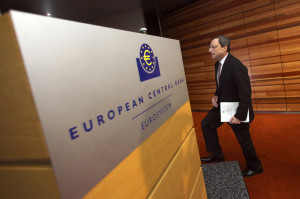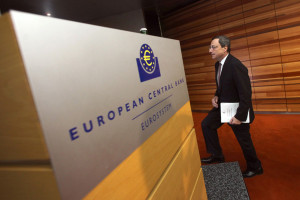ECB decrease forecast for Eurozone inflation
ECB decrease forecast for Eurozone inflation, because of the new incentives as yet assess the impact of the sharp fall in oil prices on the Eurozone economy. The last time the ECB cut its main refinancing rate in September – to the historic minimum of only 0.05 per cent and the interest rate on deposits […]

 ECB decrease forecast for Eurozone inflation, because of the new incentives as yet assess the impact of the sharp fall in oil prices on the Eurozone economy. The last time the ECB cut its main refinancing rate in September – to the historic minimum of only 0.05 per cent and the interest rate on deposits was reduced from minus 0.1% to minus 0.2%. The aim was to revive the region’s economy and to avoid the threat of deflation. But since then a series of not particularly positive data highlighted the weak state of the monetary union, whose growth remains sluggish and inflation is almost zero amid lower oil prices.
ECB decrease forecast for Eurozone inflation, because of the new incentives as yet assess the impact of the sharp fall in oil prices on the Eurozone economy. The last time the ECB cut its main refinancing rate in September – to the historic minimum of only 0.05 per cent and the interest rate on deposits was reduced from minus 0.1% to minus 0.2%. The aim was to revive the region’s economy and to avoid the threat of deflation. But since then a series of not particularly positive data highlighted the weak state of the monetary union, whose growth remains sluggish and inflation is almost zero amid lower oil prices.
Today’s meeting of the 24 members of the Management Board of the Bank will be the first consideration in the new headquarters of the ECB, housed in a 45-story skyscraper in Frankfurt. After September the bank cut its forecast for growth and inflation, analysts expect that the fall in oil prices, President Mario Draghi will present a new, lower estimates of inflation at the press conference after
meeting.
Prospects for low inflation, in turn, will prompt the ECB to announce a new range of measures to stimulate growth in the beginning of next year, including a mechanism for the purchase of government bonds. This step would be addition to the already announced programs to purchase assets from the private sector.
The problem for the ECB in assessing the impact of the fall in oil prices on the euro area economy, the decline of quotations is a double-edged sword. On the one hand, lower prices of black gold help the economy to reduce the cost of energy, but on the other they increase the risk of deflation and lower revenues of oil-producing countries, which are also export markets for goods produced in the Eurozone.









